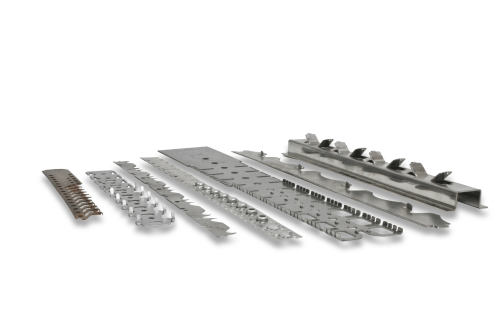In the vast realm of materials science, alloys emerge as pivotal components, showcasing an expansive range of applications across industries. These compounds, borne of blending two or more metallic elements, boast exceptional properties that often surpass those of their constituents. From bolstering structural integrity to amplifying functionality, alloys play a pivotal role in shaping our contemporary world.
Decoding Alloys: Fusion and Composition
An alloy represents a fusion of metals or a combination of a metal with other elements. Crafted through the melding and blending of multiple elements, these compounds create a homogenous substance. The resulting material exhibits unique characteristics, often exceeding those of its parent metals, owing to modified atomic structures and enhanced attributes such as strength, resilience, and corrosion resistance.

Alloys Across Industries: Diverse Applications and Impact
Alloys permeate diverse industries with their versatile applications. In aerospace engineering, the preference for lightweight yet resilient alloys like aluminum-titanium blends endures for crafting aircraft components due to their exceptional strength-to-weight ratio. Similarly, in automotive manufacturing, steel alloys play a pivotal role in creating durable yet lightweight parts, significantly contributing to both fuel efficiency and safety.
Furthermore, alloys are extensively utilized in the medical sector for implants and prosthetics, leveraging materials like stainless steel and titanium blends for their biocompatibility and strength. Additionally, in electronics, copper-based alloys ensure efficient conductivity and resistance to corrosion.
Advantages of Alloys: Tailored Solutions for Enhanced Performance
Leveraging alloys offers an array of advantages. Their tailored properties cater to specific needs, enhancing product performance and longevity. Alloys can showcase heightened mechanical strength, corrosion resistance, ductility, and conductivity, making them adaptable to various environments and applications.
Moreover, alloys often provide cost-effective solutions by amalgamating desirable attributes from different metals, reducing the reliance on more expensive materials while achieving superior performance.
Alloys and Geocomposite Integration:
Reinforcing Infrastructure Geocomposites, engineered materials for civil and environmental applications, frequently incorporate alloys to fortify their structural integrity. Alloys, especially those fortified with durability and corrosion resistance, integrate into geocomposite materials to reinforce geotechnical and construction projects. These alloys fortify the geocomposite fabric, enabling it to endure extreme conditions and offer stability in various civil engineering applications like roads, landfills, and drainage systems.
In conclusion, alloys symbolize human innovation, offering an extensive array of properties and applications across multiple sectors. Their integration into geocomposites extends their utility, significantly contributing to global infrastructure advancement and engineering solutions. As technology continues to evolve, the adaptability and versatility of alloys remain pivotal in shaping a future where their influence remains irreplaceable.
